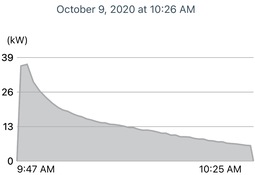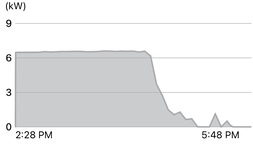To add to this a bit --LeftieBiker said:Re. the suggestions to try and raise codes when at a lower SOC, can someone explain why it might throw codes at low SOC, but not at e.g. 75% SOC even though the underlying cause is supposedly the same?
The problem is differences in capacity between the cells, resulting in differences in voltage as they discharge. When the cells have lots of charge, those differing voltages are still close together. As the bad cells near empty, though, while the good cells stay well charged, the voltage differences increase, because discharged cells have substantially lower voltages than charged ones. Below 20% charge the imbalances start to near the trigger point for the battery management system (BMS) to sound the alarm (DTCs) and act to protect the pack from permanent damage by reducing power first, then going to Turtle mode, then shutting the car down.
Cell voltages drop as load is applied
Imagine one cell at 3.2 volts and another at 2.8 volts.
A load is applied that drops each cell by 0.4 volts. The healthy cell drops to 2.8v -- no problem
The bad cell drops to 2.4V -- TURTLE
If the pack was well charged the healthy cell would be at 4.1 volts and the unhealthy cell at perhaps 3.9 volts. The load would drop the cell voltages to e.g 3.7 and 3.5 volts, respectively. Neither voltage drop would present a problem.





